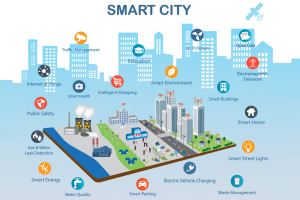The Internet of Things (IoT) has the potential to make cities smarter, more sustainable, and more efficient. Here are some examples of how IoT can be used for smart city solutions:
- Traffic management: IoT sensors can be used to monitor traffic patterns, detect accidents, and adjust traffic signals to reduce congestion and improve traffic flow.
- Energy management: IoT sensors can be used to monitor energy consumption in public buildings and streetlights, enabling energy managers to identify opportunities to reduce energy waste and improve efficiency.
- Waste management: IoT sensors can be used to monitor trash levels in public trash cans and optimize waste collection routes, reducing the cost and environmental impact of waste disposal.
- Public safety: IoT devices such as cameras, sensors, and emergency response systems can be used to improve public safety, including crime prevention and disaster response.
- Water management: IoT sensors can be used to monitor water quality, detect leaks, and optimize water usage, reducing the risk of water shortages and ensuring a sustainable water supply.
- Smart parking: IoT sensors can be used to monitor parking availability and enable drivers to find available parking spaces quickly, reducing traffic congestion and carbon emissions.
- Public transportation: IoT devices can be used to optimize public transportation routes and schedules, improving efficiency and reducing wait times for commuters.
Overall, the use of IoT in smart city solutions can improve the quality of life for citizens, reduce costs, and promote sustainability. However, it is important to ensure the security and privacy of data to prevent hacking, data breaches, and other risks.


